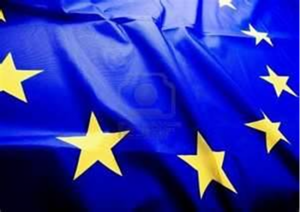News
Latest Lion Aid News
Wildlife trade and the European Union Member States
Saturday 10th November 2012
|
We are certainly aware that the European Union, consisting of 27 Member States at present, is one of the world’s major trading blocs. Not quite as big as the USA and China, but very firmly in third place for now. It should not be surprising that the EU Member States are major consumers of wild animal and forest products, ranging from tunas to teakwood and lion and leopard trophies to caviar and ivory. The USA is the biggest importer of illegal wildlife products in the world and this comes from no less of an authority than Secretary of State Hillary Clinton. China probably comes second, so that implies the EU comes third. If you doubt this, consider the fact that many tonnes of “bush meat” come into France every year from Africa as just one example. Also, the Vatican has remained strangely silent on the open trade of ivory as religious icons. Nobody has yet investigated the illegal ivory trade in Europe as the investigative reporters tend to gravitate to Vietnam and China. That does not mean it is not happening here, and likely happening on a significant scale. Don’t kid yourself. The EU, perhaps because it consists of 27 Member States is a bureaucratic institution of dinosaurian proportions. Each proposed regulation has to be discussed ad infinitum, and then the use of phrases and individual words pondered over by committees and teams and boards. Millions of Euros and years are spent in the process. Meanwhile, a wildlife trafficker seals a deal with a quick few phone calls and gets on with business. In wildlife terms it is like telling a ponderous elephant to control turbo-charged rats. So let’s look at lions with that perspective. In terms of lion hunting trophies, African nations exported a total of 5,659 trophies to the 27 EU Member States. The EU is therefore a major consumer of world lion trophies, and those countries that imported most are Spain (29% of total), France (23%), Germany (15%), Italy (6%) and Austria (5%). This is a clear and major threat to the conservation status of lion populations, especially given their greatly declining population numbers across all range states. Trophies alone represent almost 70% of all lion products exported from Africa, and as trophies virtually all represent male lions, such levels of offtake are much more significant in terms of population impact than numbers alone suggest. But the EU Wildlife Trade Regulation Scientific Review Group cannot consider trophies because trophies are exempted from trade statistics by the personal and household effects derogation. What person in their right mind would consider this in any way rational? Now let’s look at something else; the data available for assessment of trade. CITES records, while regarded as the “best” source to ensure that trade does not negatively impact the conservation status of species, are actually woefully inadequate and continuously declining in quality. Such records rely on reporting from both the exporting and importing countries to arrive at matching data. However, in many cases the data wanders off on convoluted journeys and contributes to many internal inconsistencies. As an example, TRAFFIC reported the export of a total of 657 rhino hunting trophies from South Africa to Vietnam over the years 2003-2010. Vietnam records imports of 170 trophies, and CITES states that 241 trophies were imported during that time? Similarly, South Africa states that a total of 1416 lion trophies were exported to the EU Member States 1990-2010 according to CITES records, while the Member States reported an import of 1693 trophies from South Africa. This means that 277 trophies are unaccounted for. In 2010 alone, South Africa reported an export of 35 lion trophies to the EU, while the EU Member States report receiving 122 trophies. Is this supposed to be the quality of information complacently used to assess the impact of wildlife trade on wildlife conservation?
Tags: CITES, EU, South Africa, lion trophies, SRG, population declines, Categories: Population declines, Politics and Wildlife |
Posted by Pieter Kat at 13:49
No comments have been posted yet.
Add a new comment
Existing user
New user sign up




